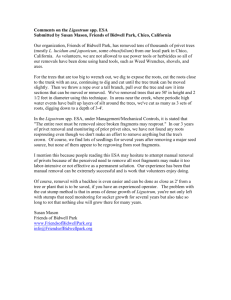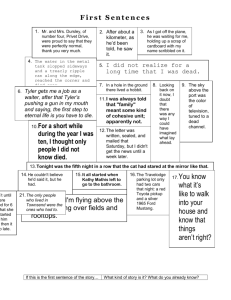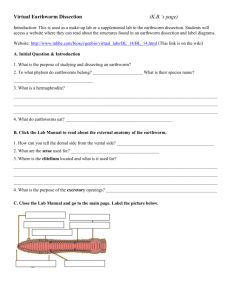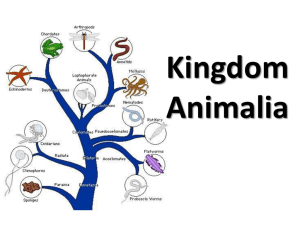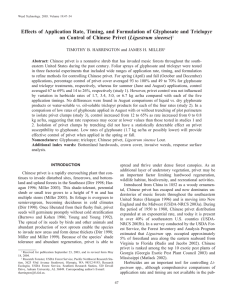Ligustrum sinense Reference Felled
advertisement
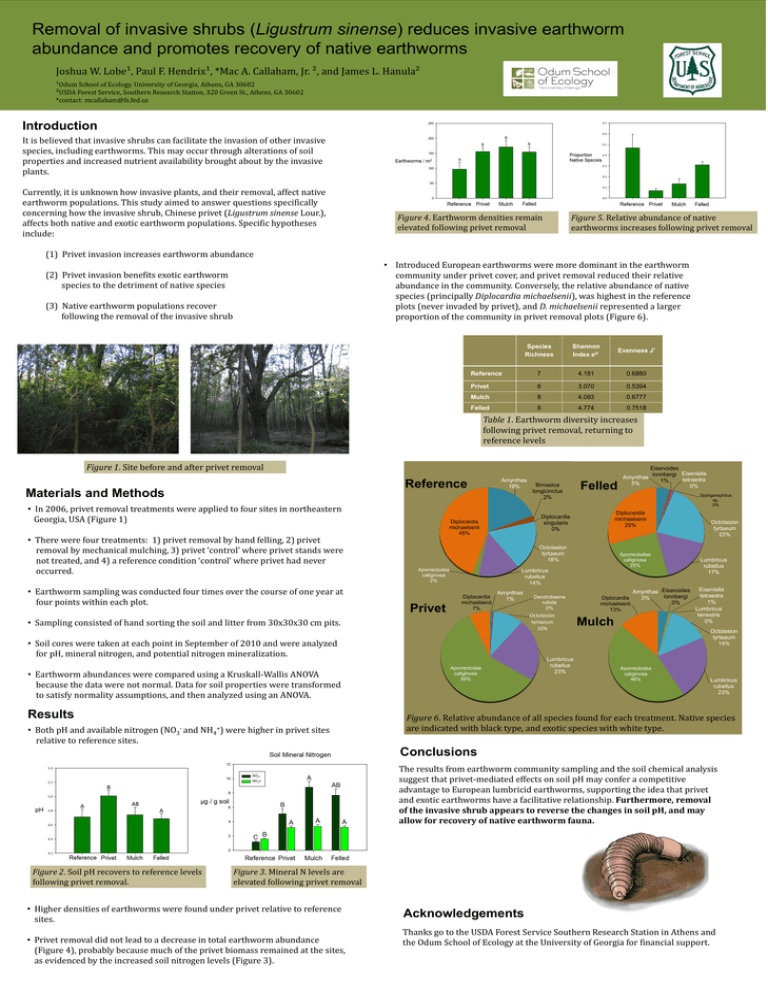
Removal of invasive shrubs (Ligustrum sinense) reduces invasive earthworm abundance and promotes recovery of native earthworms Joshua W. Lobe¹, Paul F. Hendrix¹, *Mac A. Callaham, Jr. ², and James L. Hanula² ¹Odum School of Ecology, University of Georgia, Athens, GA 30602 ²USDA Forest Service, Southern Research Station, 320 Green St., Athens, GA 30602 *contact: mcallaham@fs.fed.us Introduction It is believed that invasive shrubs can facilitate the invasion of other invasive species, including earthworms. This may occur through alterations of soil properties and increased nutrient availability brought about by the invasive plants. Currently, it is unknown how invasive plants, and their removal, affect native earthworm populations. This study aimed to answer questions specifically concerning how the invasive shrub, Chinese privet (Ligustrum sinense Lour.), affects both native and exotic earthworm populations. Specific hypotheses include: Figure 4. Earthworm densities remain elevated following privet removal Figure 5. Relative abundance of native earthworms increases following privet removal (1) Privet invasion increases earthworm abundance • Introduced European earthworms were more dominant in the earthworm community under privet cover, and privet removal reduced their relative abundance in the community. Conversely, the relative abundance of native species (principally Diplocardia michaelsenii), was highest in the reference plots (never invaded by privet), and D. michaelsenii represented a larger proportion of the community in privet removal plots (Figure 6). (2) Privet invasion benefits exotic earthworm species to the detriment of native species (3) Native earthworm populations recover following the removal of the invasive shrub Species Richness Shannon Index eH´ Evenness J' Reference 7 4.181 0.6880 Privet 6 3.070 0.5394 Mulch 8 4.093 0.6777 Felled 8 4.774 0.7518 Table 1. Earthworm diversity increases following privet removal, returning to reference levels Figure 1. Site before and after privet removal Reference Materials and Methods • In 2006, privet removal treatments were applied to four sites in northeastern Georgia, USA (Figure 1) • There were four treatments: 1) privet removal by hand felling, 2) privet removal by mechanical mulching, 3) privet ‘control’ where privet stands were not treated, and 4) a reference condition ‘control’ where privet had never occurred. • Earthworm sampling was conducted four times over the course of one year at four points within each plot. Amynthas 19% Diplocardia michaelsenii 45% • Both pH and available nitrogen (NO3- and NH4+) were higher in privet sites relative to reference sites. Sparganophilus sp. 0% Diplocardia michaelsenii 29% Octolasion tyrtaeum 18% Aporrectodea caliginosa 2% Privet Aporrectodea caliginosa 25% Lumbricus rubellus 14% Diplocardia michaelsenii 7% Amynthas 1% Dendrobaena rubida 0% Octolasion tyrtaeum 10% • Soil cores were taken at each point in September of 2010 and were analyzed for pH, mineral nitrogen, and potential nitrogen mineralization. Results Felled Diplocardia singularis 0% • Sampling consisted of hand sorting the soil and litter from 30x30x30 cm pits. • Earthworm abundances were compared using a Kruskall-Wallis ANOVA because the data were not normal. Data for soil properties were transformed to satisfy normality assumptions, and then analyzed using an ANOVA. Bimastos longicinctus 2% Eisenoides lonnbergi Eiseniella Amynthas tetraedra 1% 5% 0% Aporrectodea caliginosa 59% Lumbricus rubellus 23% Amynthas Eisenoides lonnbergi Diplocardia 3% 0% michaelsenii 13% Mulch Octolasion tyrtaeum 23% Lumbricus rubellus 17% Eiseniella tetraedra 1% Lumbricus terrestris 0% Octolasion tyrtaeum 14% Aporrectodea caliginosa 46% Lumbricus rubellus 23% Figure 6. Relative abundance of all species found for each treatment. Native species are indicated with black type, and exotic species with white type. Conclusions The results from earthworm community sampling and the soil chemical analysis suggest that privet-mediated effects on soil pH may confer a competitive advantage to European lumbricid earthworms, supporting the idea that privet and exotic earthworms have a facilitative relationship. Furthermore, removal of the invasive shrub appears to reverse the changes in soil pH, and may allow for recovery of native earthworm fauna. Figure 2. Soil pH recovers to reference levels following privet removal. Figure 3. Mineral N levels are elevated following privet removal • Higher densities of earthworms were found under privet relative to reference sites. • Privet removal did not lead to a decrease in total earthworm abundance (Figure 4), probably because much of the privet biomass remained at the sites, as evidenced by the increased soil nitrogen levels (Figure 3). Acknowledgements Thanks go to the USDA Forest Service Southern Research Station in Athens and the Odum School of Ecology at the University of Georgia for financial support.
